The Absent Are Still Holy
B.A. Exhibition, Southwestern University, 2023
Absence/Presence III, Intaglio monoprint and Papercutting, 2023, 22 in. x 25 in.
Absence/Presence II, Intaglio monoprint and Papercutting, 2023, 30 in. x 22 in.
Divinity, Default, History, Memory, Intaglio monoprint and Papercutting, 2023, 38 in. x 16 in.
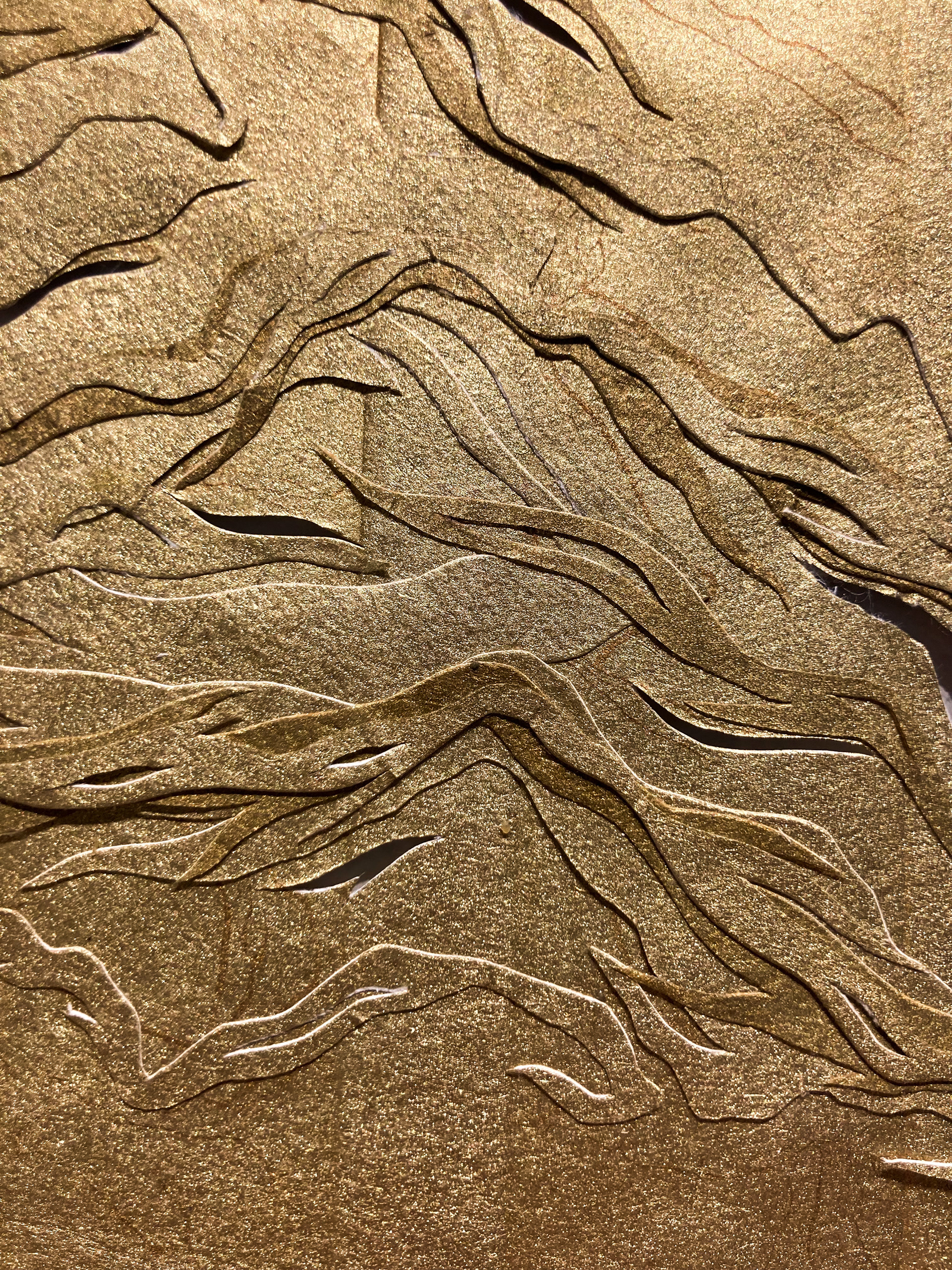
Detail Image
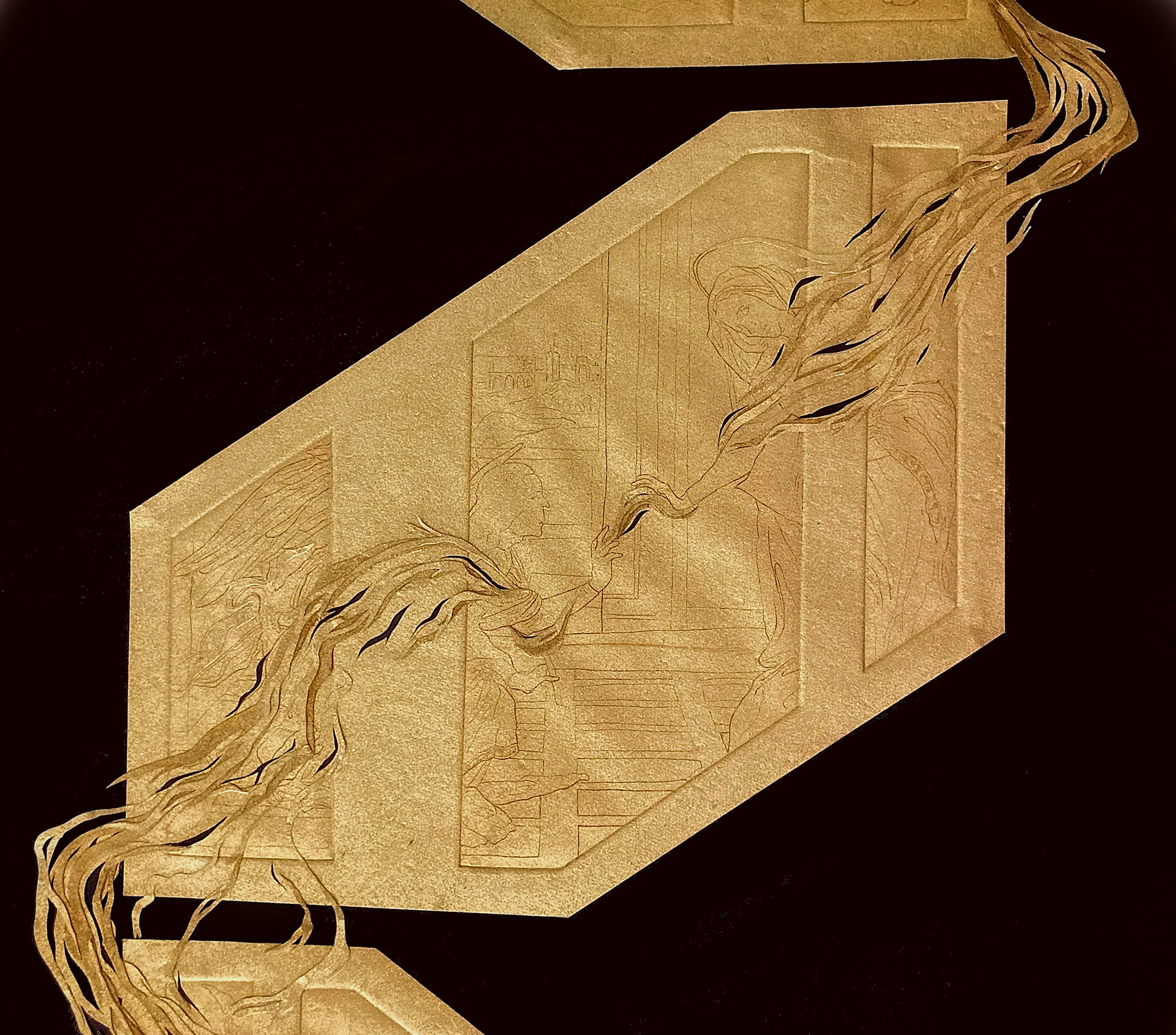
Detail Image

Detail Image
Even “Stolen” Rainbows Point to Heaven, Intaglio monoprint and Papercut, 2023, 16 in. x 19 in.
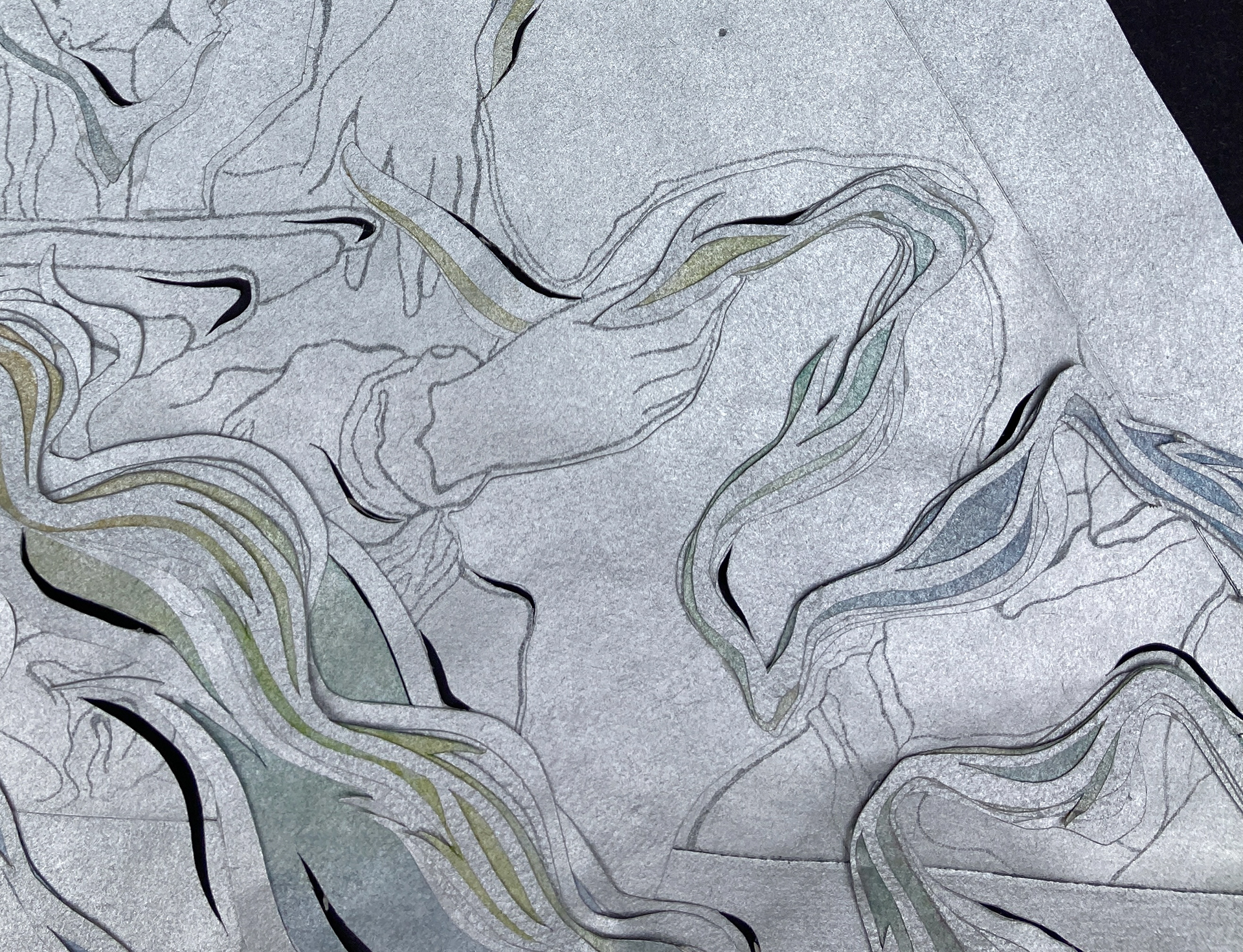
Detail of "Even Stolen Rainbows Point to Heaven"

Detail of "Even Stolen Rainbows Point to Heaven"
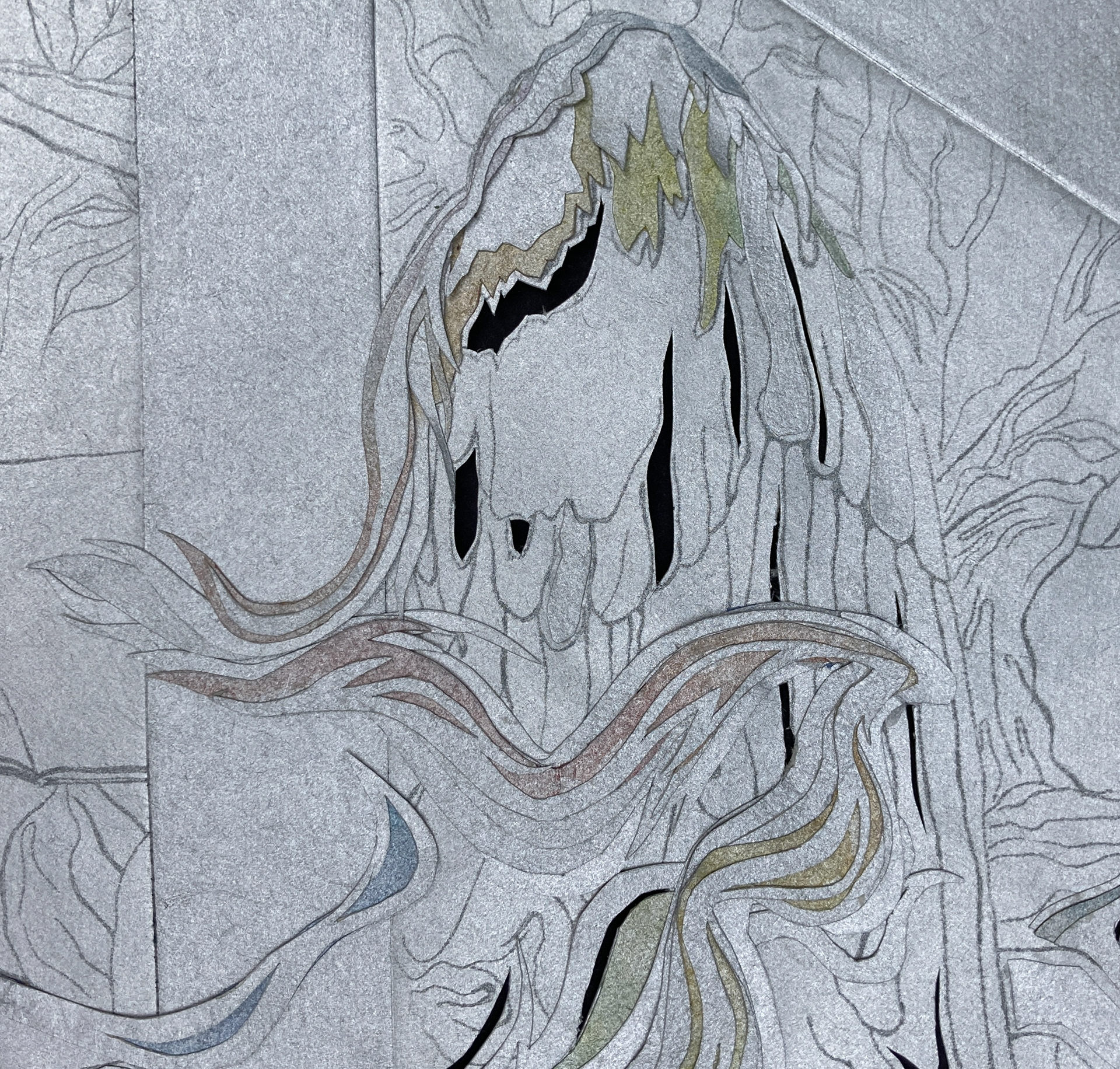
Detail of "Even Stolen Rainbows Point to Heaven"
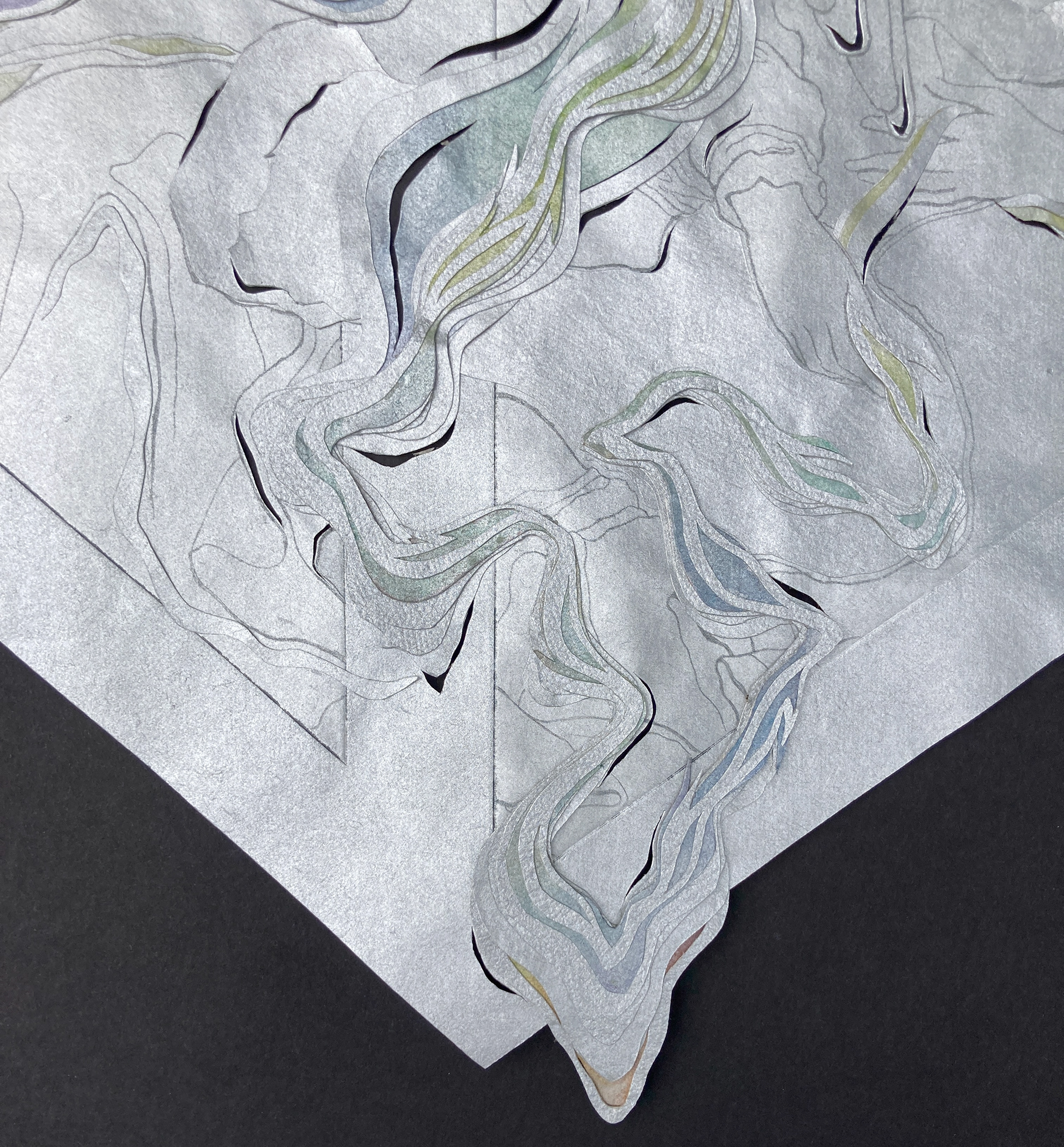
Detail of "Even Stolen Rainbows Point to Heaven"
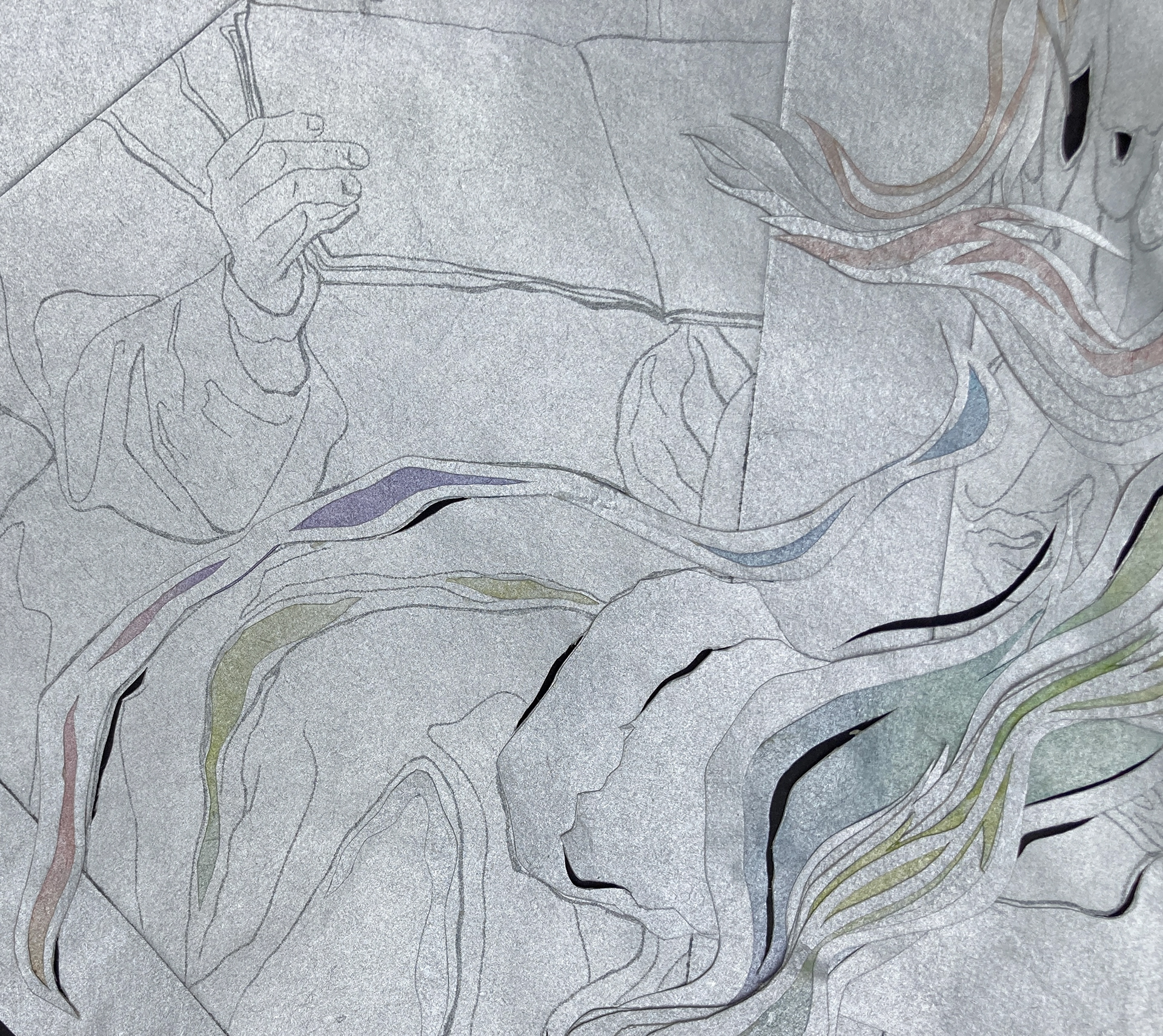
Detail of "Even Stolen Rainbows Point to Heaven"
Isaac, Oil on Panel, 2023, 18 in. x 30 in.
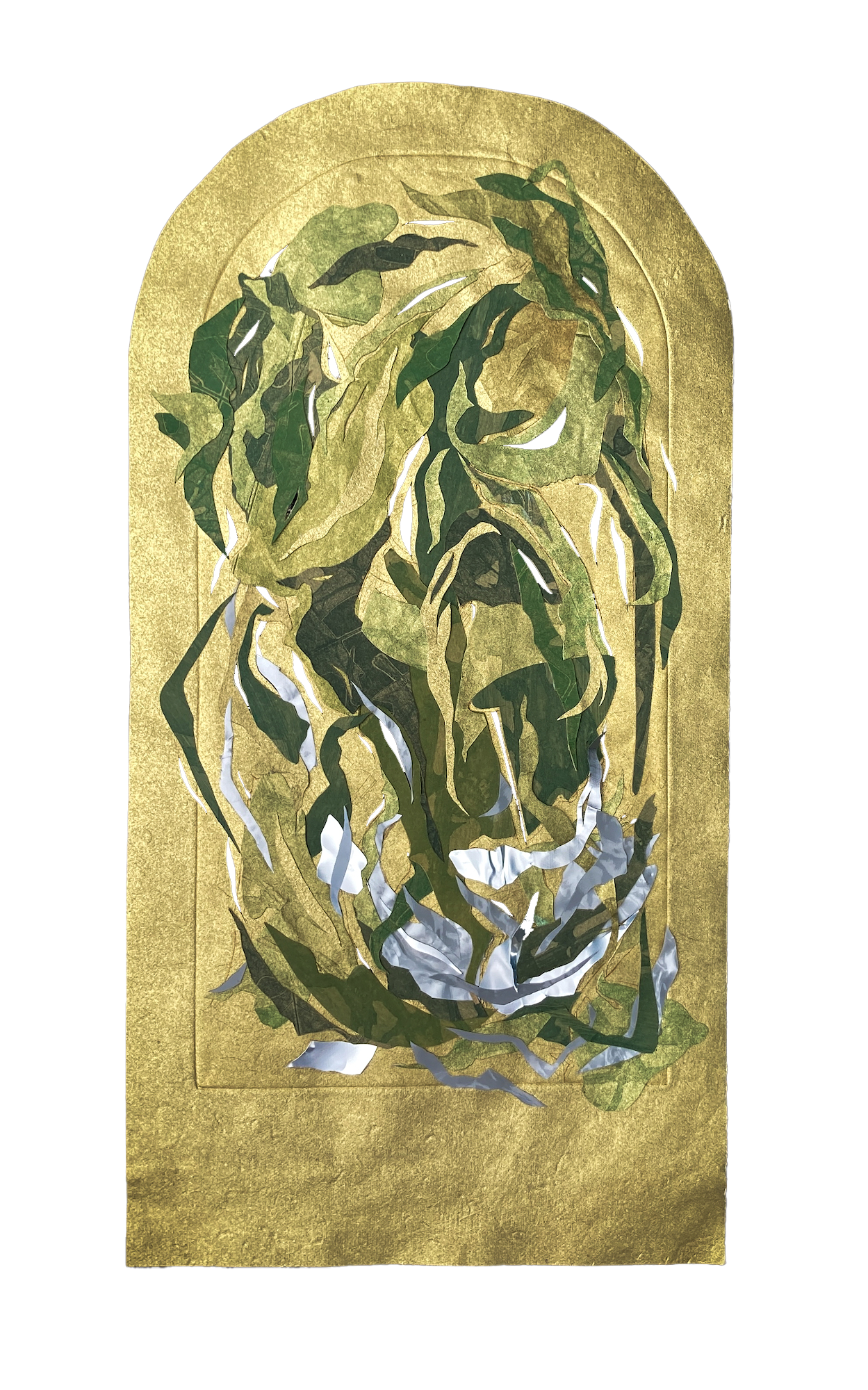
"Dispelled With The Species," Intaglio, paper cutting, and found plastics, 2023.
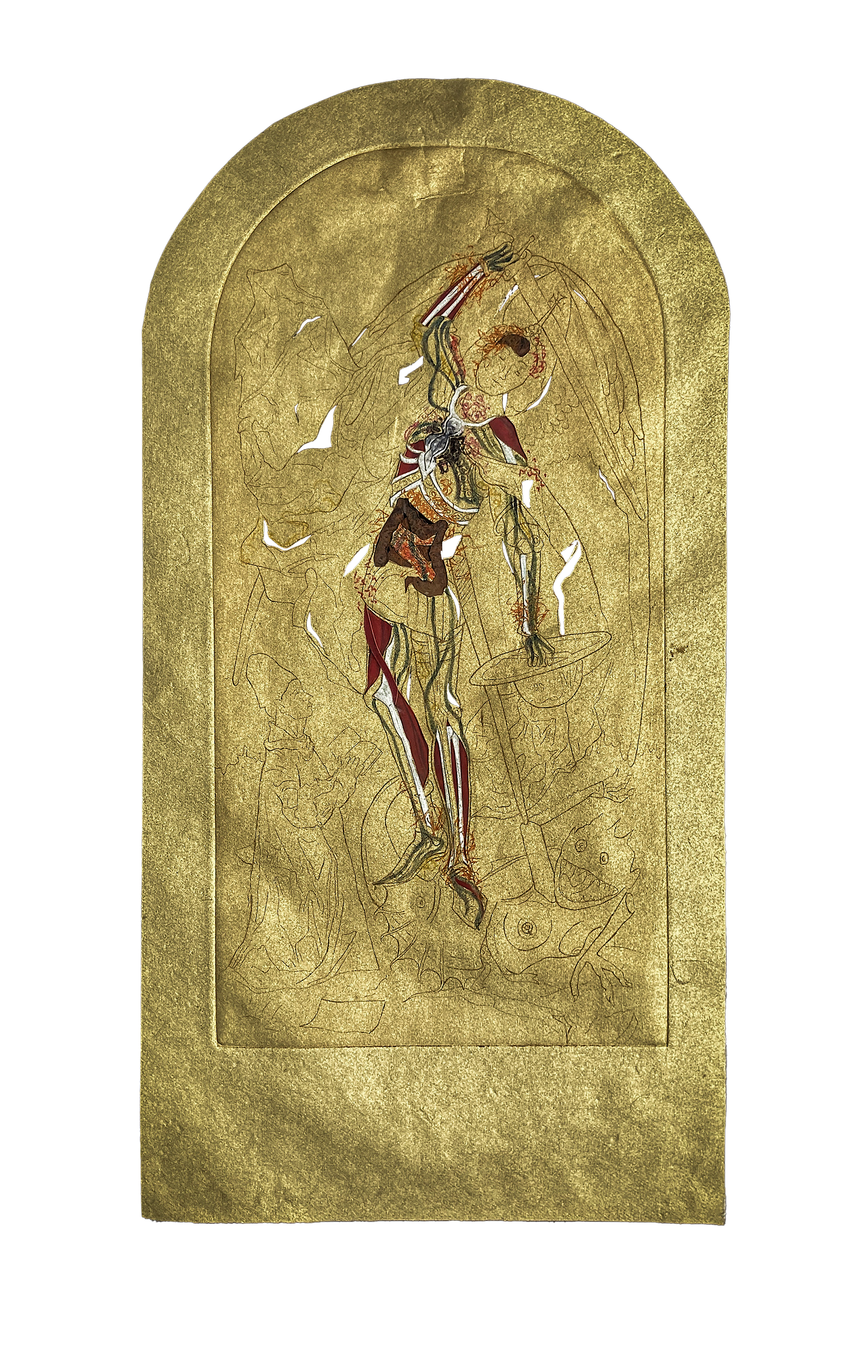
"To Hate the Flesh and be Sanctified.," Intaglio, and paper cutting, 2023.

"Are American Children More Precious to God?" Intaglio and paper cutting, 2023.
Promised Land (Triptych): Dispelled With the Species (L), To Hate the Flesh and Be Sanctified (C), and Are American Children More Precious to God? (R), Intaglio (Hardground and Softground), papercutting, painting, drawing, and found single-use plastics, 2023, each panel is 18 in. x 9 in.
To Envision God Is To Never Escape Myself, Lithograph with collaborative printer Teresa De Artiñano-Gómez at the Tamarind Institute, 2023, 37 in. x 23 in.
ARTIST STATEMENT
Drawing on studies of post-structuralism, semiotics, and religious paintings, The Absent Are Still Holy investigates canonized images of Christian divinity as unstable semiotic signs which construct a privileged social default. Appropriation of historic religious works generates a series of theoretical objects which examine the role of holy bodies in legitimizing systems of supremacy and oppression integral to American identity.
Each work examines levels of psychological access and exclusion from the notion of “God” through a synthesis of traditional printmaking and painting techniques with household craft materials. Use of many media within the language of abstraction encourages imaginative reconstructions of holiness and democratizes power to shape sacred bodies. Additionally, papercutting functions as a destabilizing force within the non-rectilinear picture-plane. These choices fragment earthly space, disrupt formal agents of holy depiction in reference works, and signal entry into a metaphysical space. Emphasis is thus placed on the intangible nature of God rather than defining God within the framework of a human body, pointing to the constructed nature of the painted God and rejecting notions of a divinely-sanctioned group. This abstraction also allows sacred bodies to be replaced with traits traditionally excluded from depictions of divinity without inherently excluding other human bodies, dissolving binary notions of the holy and the enemy.
Through materials and subversion of normative bodies, the series probes the Western cultural default for its partial origins in historical religious imagery, examining how divine bodies are used to legitimize default Western identities. Through this dissection of historical artworks, The Absent Are Still Holy considers the disruptive possibilities of reconstructing signifiers of “God” to dissolve constructed notions of normativity and dismantle oppressive systems.
BIBLIOGRAPHY
Bal, Mieke. Quoting Caravaggio : Contemporary Art, Preposterous History. Chicago, Ill.: University of Chicago Press, 1999.
Bradley, Arthur. “Introduction.” In Derrida’s Of Grammatology: An Edinburgh Philosophical Guide, 1–14. Edinburgh University Press, 2008.
Eagleton, Terry. “Post-Structuralism.” in Literary Theory: an Introduction, 110-116. Minneapolis, MN: The University of Minnesota Press, 1996.
Kolchin, Peter. “Whiteness Studies.” Journal de La Société Des Américanistes 95, no. 1 (2009): 117–63. http://www.jstor.org/stable/24606420.
Melion, Walter, and Wandel, Lee Palmer, eds. Image and Incarnation : The Early Modern Doctrine of the Pictorial Image. Boston: BRILL, 2015. Accessed October 16, 2023. ProQuest Ebook Central.
Morgan, David. “The Shape of the Holy.” In The Forge of Vision: A Visual History of Modern Christianity, 1st ed., 13–41. University of California Press, 2015. http://www.jstor.org/stable/10.1525/j.ctt1963341.6.
Racco, Tiffany. “Darkness in a Positive Light: Negative Theology in Caravaggio’s ‘Conversion of Saint Paul.’” Artibus et Historiae 37, no. 73 (2016): 285–98. http://www.jstor.org/stable/44082065.
Steinberg, Leo. “The Sexuality of Christ in Renaissance Art and in Modern Oblivion.” October 25 (1983): 1–222. http://www.jstor.org/stable/778637.
Takacs, Axel Marc Oaks. “Toward a Praxis of Reconciliation: Catholic Theology, Interreligious Studies, and Anti-Muslim Bigotry.” In The Georgetown Companion to Interreligious Studies, edited by Lucinda Mosher, 197–210. Georgetown University Press, 2022. https://doi.org/10.2307/j.ctv27qzsb3.24.